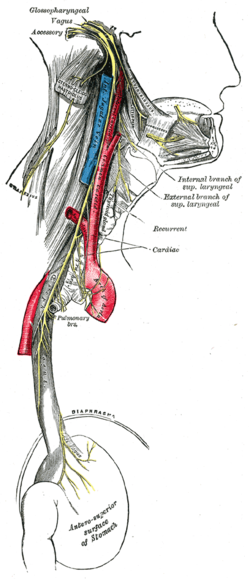| Post-vagotomy diarrhea | |
|---|---|
 | |
| Course of vagus nerve | |
| Specialty | Gastroenterology |
Post-vagotomy diarrhea is a form of diarrhea which occurs in 10% of people after a truncal vagotomy, which can range from severe to debilitating in approximately 2% to 4% of patients. [1] However, the occurrence of post-vagotomy diarrhea is significantly reduced after proximal selective vagotomy, specifically when celiac and hepatic branches of the vagus are retained. [1]